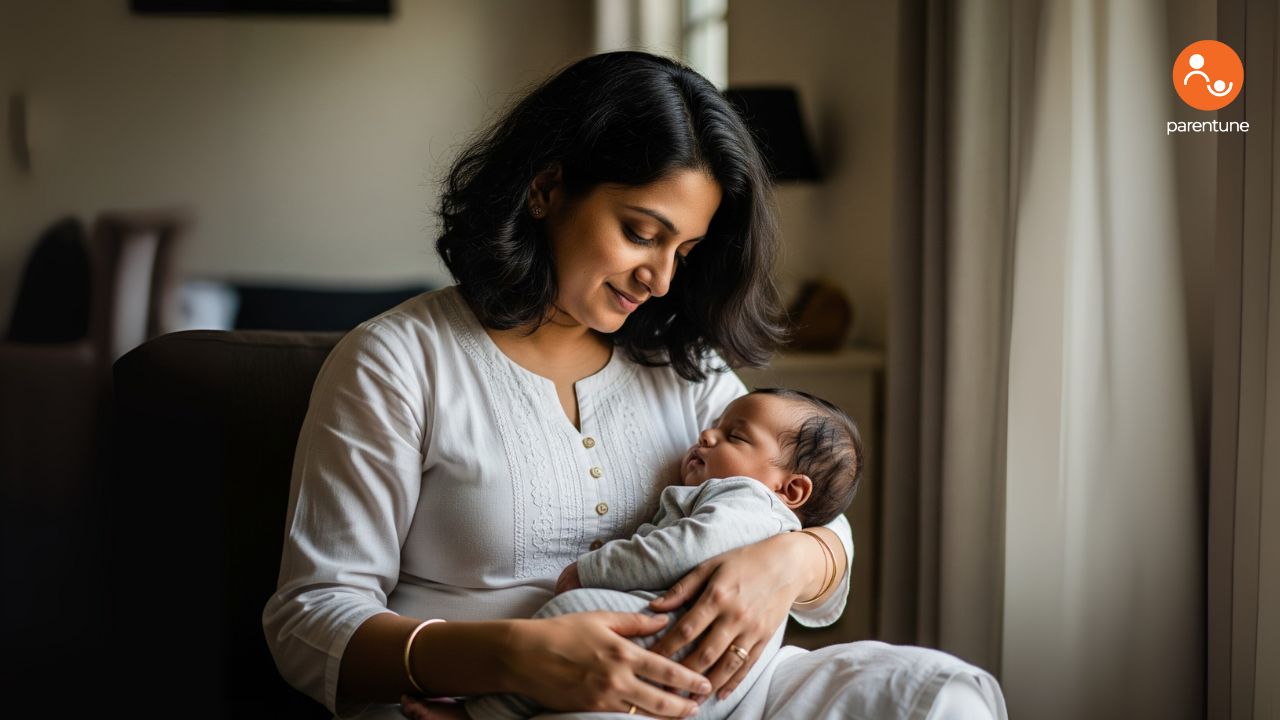sleep-health
How To Help Your Baby Sleep In A Crib (Not Just Your Arms)

Why self-soothing isn’t selfish—and how to make the crib feel like home
The most exhausting kind of love? The kind that never lets go.
Literally.
You rock, sway, bounce. The baby finally drifts off—but the moment you try placing them in the crib, their eyes shoot open. And the cycle begins again.
It’s not just about sleep.
It’s about identity, trust, independence—and the quiet fear no one talks about: If I let go, will they still feel safe?
Doctor Q&As from Parents like you
This is for every parent caught between arms that ache and hearts that won't.
Let’s reframe the crib not as separation—but as a space of confidence.
Why Do Babies Prefer Arms Over Cribs?
Because your arms are a system. The crib is a surface.
To your baby, you are warmth, rhythm, and safety. Your smell, your heartbeat, your movement—they’re cues from the womb that say: “All is well.”
The crib? It’s still, scentless, and silent. No wonder it feels alien.
This isn’t about spoiling your baby. It’s about helping them gradually map comfort to a new context.
So we don’t fight biology.
We transition with it.
The Crib Transition Isn’t A Single Leap. It’s A Series Of Bridges.
Here’s the quiet truth most parenting books skip:
No baby “learns” to sleep in a crib overnight.
What they learn is how to trust a new system of signals.
And your job?
To build that system—brick by sensory brick.
You may also like to read:
Start with the Setup: Is the Crib an Invitation or a Command?
Before any sleep routine begins, check the space itself.
1. Match the sensory cues of your arms
-
Warmth: Pre-warm the crib with a hot water bottle (remove it before placing baby).
-
Smell: Lay a t-shirt you’ve worn nearby (safely outside the sleep zone).
-
Movement: Try a gently rocking bassinet or crib with a slight sway.
2. Make the crib a place, not a punishment
Use it outside of naps. Let your baby play, babble, or just kick around inside during the day.
This turns the crib from “where I’m left alone” to “where I do life.”

Use Routines To Signal, Not Control
Sleep routines work not because they’re rigid, but because they’re rhythmic.
Babies don’t need rules. They need patterns.
A simple 4-part pre-sleep rhythm:
-
Dim the lights – mimic sunset
-
Play a consistent sound – like white noise or a soft lullaby
-
Feed, burp, cuddle – comfort, not sedation
-
Verbal cue – a phrase like “time to rest now” said calmly every time
Think of it like a musical cue before a stage performance.
It doesn’t put the baby to sleep—but it tells them what’s about to happen.
Transfer Smart: It’s Not When, It’s How
Here’s where most parents get stuck.
They wait until the baby is asleep—then slowly lower them into the crib.
The baby, sensing the change in position, temperature, and rhythm…
Wakes up. Cries. We start over.
Instead, try this:
The Drowsy-But-Awake Drop
Yes, it’s harder upfront. But it teaches your baby how to finish the journey to sleep on their own.
That’s the real win.
Place them down when their eyes are heavy, but not closed.
Stay nearby. Offer a gentle pat or whisper to soothe—but don’t pick them up immediately.
If they fuss?
Pause.
Let the discomfort breathe for a few seconds before reacting. You're helping them build tolerance, not suffer.
Expect Setbacks. That’s Part Of The System.
Even the best sleep transitions include tears.
Not because your baby is broken—but because adaptation involves protest.
Here’s what helps:
-
Stay consistent for at least 3–5 nights before switching strategies
-
Track improvements by how long they sleep, not just how fast they fall asleep
-
Avoid “rescue habits” like re-rocking to sleep at every cry—they reset the learning curve
How Long Does This Take? Longer Than Instagram Suggests
Every baby has their own rhythm. Some adjust in a few days. Others in weeks.
There’s no shame in slower timelines.
The key is direction, not speed.
Even 10% more crib time each night is progress.
The Deeper Layer: Why This Transition Matters For You Too
This isn’t just about rest.
It’s about reclaiming space—as a parent, as a partner, as a person.
When your baby sleeps in their crib, something else wakes up in your life:
-
The ability to have dinner without bouncing a baby
-
A moment to stretch without holding tension in your back
-
The quiet permission to sleep—not just nap in shifts
It’s not selfish.
It’s sustainable.
From Isolation To Community: You’re Not Doing This Alone
Sleep struggles feel lonely. But they’re not rare.
That’s why platforms like Parentune exist—not just to give expert advice, but to validate your lived experience.
You’ll find sleep coaches, peer stories, and forums from parents navigating this same terrain—with real wins and real mess-ups.
Because sometimes, what we need most isn’t more data.
It’s someone saying “we went through this too”.
Final Thought: Arms Are For Love. Cribs Are For Growth.
Holding your baby is sacred. But so is teaching them to rest in a space that doesn’t need you every second.
That’s the real gift.
Because one day they’ll need to fall asleep in unfamiliar places—in new homes, on school trips, in life’s transitions.
The crib is your first chance to say:
“You’re safe even when I’m not holding you. And I’m just one reach away.”
Let this be your new mantra:
You’re not weaning them from comfort.
You’re helping them grow into it.
Be the first to support
Be the first to share
Related Blogs & Vlogs
No related events found.